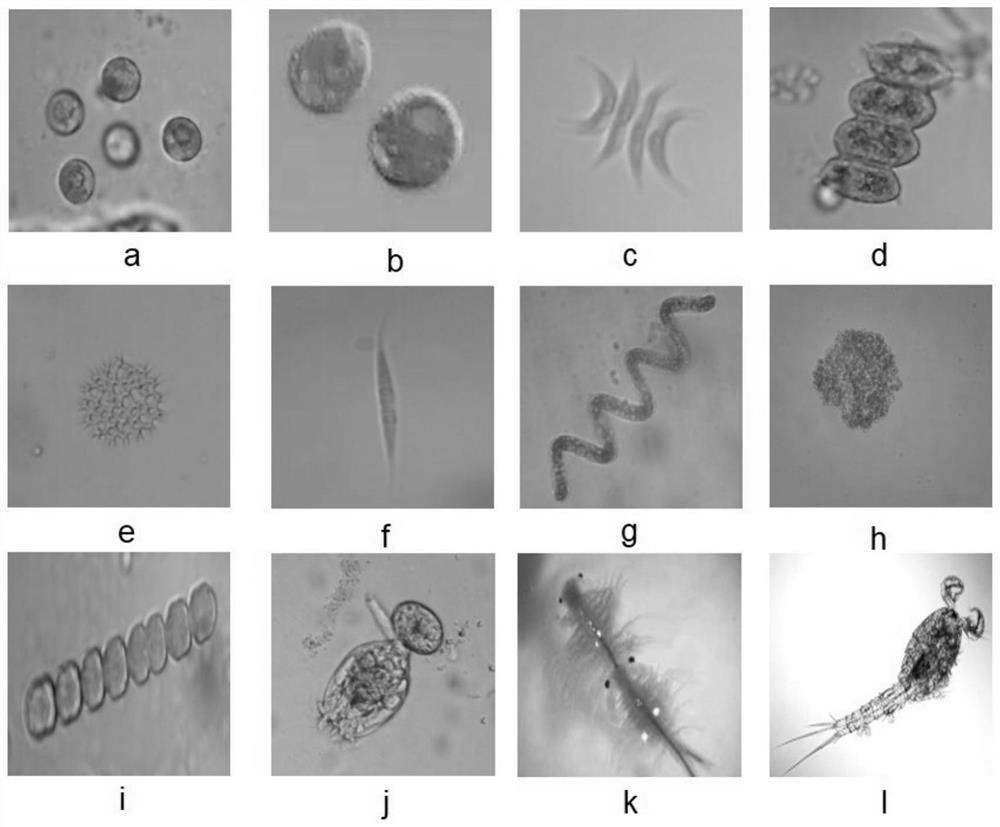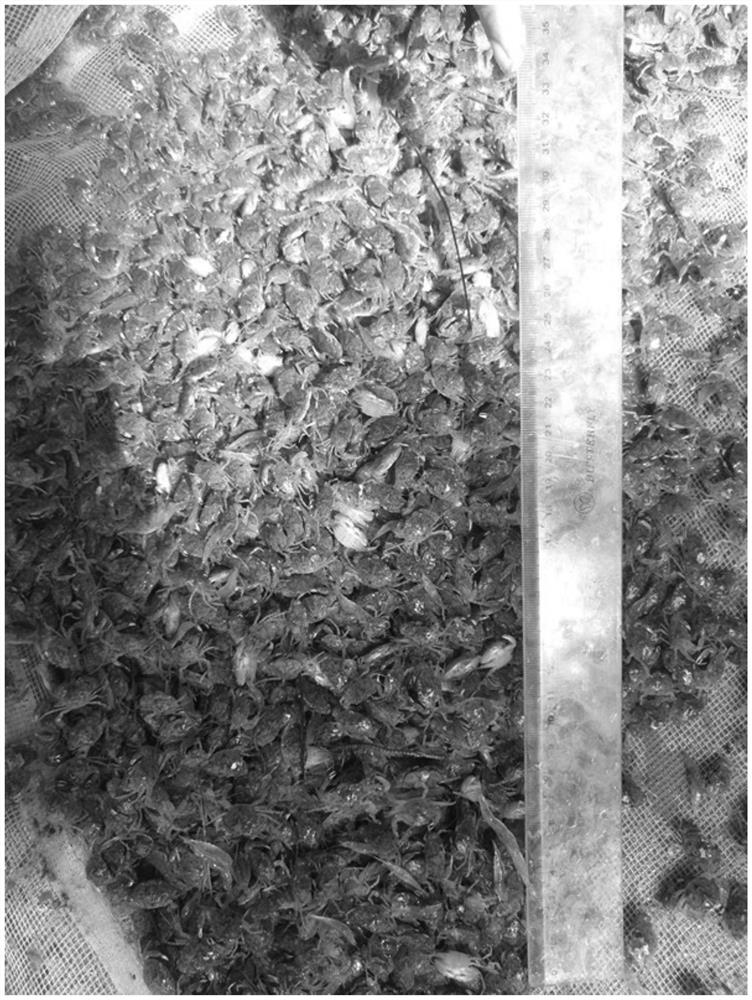A kind of method for cultivating mud crab zoster and megalopa in ponds
A technology for flea-like larvae and macrophthalmia, which is applied in the field of pond cultivation of the flea-like larvae and macrophthalmia of Scylla simulans, can solve the problem of the difficulty in popularizing and popularizing the factory-based seedling breeding method of blue crabs, and the influence of the enthusiasm of seedling production units on seedling breeding. , the uncertainty of the cost of seedlings, etc., to achieve the effect of enriching the variety of bait organisms, increasing the income of seedlings, and good physique and color
- Summary
- Abstract
- Description
- Claims
- Application Information
AI Technical Summary
Problems solved by technology
Method used
Image
Examples
Embodiment 1
[0040] The implementation time is from June 3 to July 5, 2018, and the implementation location is the seawater fish and shrimp cultivation room in Raoping County, Guangdong Province.
[0041] (1) Preparation of the cultivation pond: The cultivation pond has convenient transportation, sufficient supply of electricity, seawater and fresh water; the salinity of seawater is 29ppt, the pH is stable at around 8.0, and the water quality complies with national and industry regulations. Choose a 200-square-meter rectangular cement pool, and lay a plastic film to prevent water leakage and seepage. The depth of the pool is 1.7 meters. 10 days before seedling deployment, enter 80 cm deep sand to filter sea water, and use bleaching powder to kill pathogenic microorganisms, moss spores, barnacles and wild fish fry and other harmful organisms in the water body (the effective concentration of chlorine is 10 mg / L).
[0042] (2) Cultivation of bait organisms
[0043] After 2 days of disinfecti...
Embodiment 2
[0062] The implementation time is from June 17 to July 8, 2018, and the implementation location is the seawater fish and shrimp cultivation room in Raoping County, Guangdong Province.
[0063] (1) Preparation of the cultivation pond
[0064] It is basically the same as the step (1) of embodiment 1, the difference is that the size of the pond is 1000 square meters.
[0065] (2) Cultivation of bait organisms
[0066] After 2 days of disinfection, use the residual chlorine detection kit to detect the residual chlorine content in the water, and then neutralize the residual chlorine with sodium thiosulfate. After residual chlorine disappears, compound fertilizer (10ppm) and urea (5ppm) are sprinkled on the whole pond and inserted into 5 cm of chlorella liquid. At this time, the color of the water is light yellow-green. Cultivate for 5 days, when the pool water turns dark green, inoculate rotifers at an inoculation density of 3 / ml, and after cultivating for 5 days, when the rotife...
PUM
 Login to View More
Login to View More Abstract
Description
Claims
Application Information
 Login to View More
Login to View More - R&D
- Intellectual Property
- Life Sciences
- Materials
- Tech Scout
- Unparalleled Data Quality
- Higher Quality Content
- 60% Fewer Hallucinations
Browse by: Latest US Patents, China's latest patents, Technical Efficacy Thesaurus, Application Domain, Technology Topic, Popular Technical Reports.
© 2025 PatSnap. All rights reserved.Legal|Privacy policy|Modern Slavery Act Transparency Statement|Sitemap|About US| Contact US: help@patsnap.com



